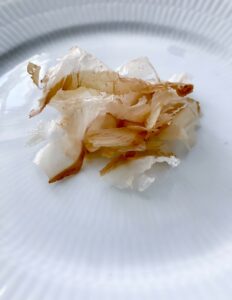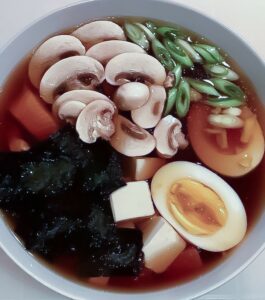
More and more people have become aware of bonito flakes.
In 2004, I first encountered bonito flakes in Tokyo.
At that time, in Tokyo I was practising the martial art kendo. After evening training, I was invited to the home of my teacher and his family, where we ate dishes from the classic Japanese cuisine. There I noticed the thin flakes with a smoky fish flavor, which was used as a kind of topping on the dishes.
In 2006 when I was trained as a sushi chef abroad, I got to know bonito flakes very well. I found out that the fish Bonito is related to tuna. It is a fish that is filleted, smoked and dried for a long period of time. The dried bonito is than shaved into thin flakes.
Bonito flakes are a solid ingredient in Japanese cuisine, which is used in many different ways. The fish bonito together with other Japanese ingredients form the foundation of Japanese cuisine.
In the Noodle Soup course for beginners, you learn, among other things how bonito flakes are used in Japanese soups in Tokyo.
_
Zoë has lectured and held sushi courses for A. P. Moller – Maersk, Hugo Boss Nordic, Novo Nordisk, Novartis, Velux, Gorrissen Federspiel, Beierholm revision, Elbek & Vejrup and many more.


